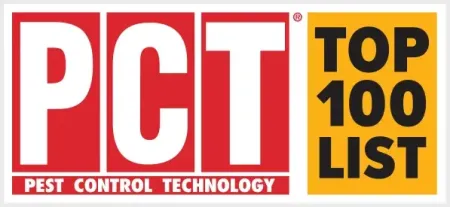Termite Trouble? How to Spot the Signs, Prevent Damage, and Protect Your Home

When it comes to protecting your home, few threats are as silent and destructive as termites. These small insects can do major damage over time, often without any obvious warning signs—until it's too late. Whether you're dealing with strange damage to your baseboards, sagging wood flooring, or the unmistakable mess of termite frass, it's important to know the signs of an infestation, the steps for prevention, and how to handle repairs.
In this guide, we’ll break down the types of termites, the damage they cause, and the solutions available to help you guard your home against these unwanted invaders.
Understanding the Enemy: Common Types of Termites
There are several different termite species, but two are the most common culprits in household damage:
Eastern Subterranean Termites
These termites are among the most aggressive and destructive species in North America. Eastern subterranean termites live in large colonies underground and rely on moisture to survive. They access homes through the soil, typically entering through cracks in the foundation or around plumbing. Once inside, they begin feeding on structural wood, flooring, and even furniture.
Dry Wood Termites
Unlike their subterranean cousins, dry wood termites don’t need contact with the soil. They live and feed within dry wood, which means they can infest furniture, trim, and baseboards—even the attic rafters. One clear indicator of a dry wood termite problem is dry wood termite frass, which looks like tiny pellets of wood-colored sand. This frass is actually termite droppings and often accumulates below infested areas.
Spotting the Signs: How to Identify a Termite Infestation
The earlier you catch an infestation, the better. Here are some key signs to watch for:
- Visible frass or droppings – Homeowners often ask, “What does termite poop look like?” If you’re seeing small, ridged pellets or sawdust-like debris, that’s likely dry wood termite frass.
- Hollow or soft wood – Tap your wood flooring or walls. If they sound hollow, termites may have eaten away the interior.
- Cracked or buckling baseboards – Subtle warping or damage to baseboards and door frames can signal a deeper issue.
- Mud tubes – Eastern subterranean termites build pencil-sized tubes of mud along foundations or walls to travel safely between their nest and food source.
- Swarmers and discarded wings – In the spring, you might see flying termites (called swarmers) or piles of their wings near windowsills.
- Dry rot – This is sometimes confused with termite damage, but can also indicate long-term moisture problems that attract termites.
If you spot any of these signs, it’s time to schedule a professional termite inspection. Inspections help confirm the presence and extent of termite activity and determine the species involved—critical for choosing the right treatment.
Prevent the Problem: How to Protect Your Home
Once you’ve confirmed that termites are a threat, it’s essential to act fast. But prevention is even better. Here are the top termite prevention methods:
Termite Barriers
Installing a termite barrier is one of the most effective preventative measures you can take. These barriers can be chemical (applied to the soil around your home) or physical (such as steel mesh or sand). A barrier stops Eastern subterranean termites before they can reach your home’s foundation.
Bait and Monitoring Systems
Termite monitoring systems use in-ground stations that detect termite activity before an infestation spreads. If termites are detected, the station switches to a bait system. The termite bait is carried back to the colony, slowly eliminating it over time.
Eliminate Moisture and Wood Contact
Since termites thrive in moist environments, it’s important to fix leaky pipes, clean out gutters, and reduce soil-to-wood contact around your home. Keep firewood and mulch away from your foundation.
Regular Termite Inspections
Preventive termite inspections—at least once a year—can catch problems early. A pest control professional knows where to look and what subtle signs to spot.
What If It’s Too Late? Repairing Termite Damage
If termites have already caused damage, don’t worry—there are ways to fix it. Termite damage repair ranges from minor fixes to major reconstruction, depending on the severity of the infestation.
- Baseboard Replacement – Damaged baseboards are often the first visible sign of a problem. These can be replaced quickly once the infestation is treated.
- Wood Flooring Repairs – If your wood flooring has warped, buckled, or feels spongy, sections may need to be replaced. In some cases, refinishing may be enough.
- Structural Repairs – For more advanced cases, a contractor may need to replace support beams, joists, or framing affected by dry rot or termite damage.
- Preventative Strategies – After termite repair, it’s wise to install termite barriers or monitoring systems to avoid future infestations.
Stay One Step Ahead
Through regular termite inspections, effective use of termite monitoring and bait systems, and the installation of a proper termite barrier, you can prevent these pests from causing costly damage.
And if they’ve already made their way inside, don’t worry. With thorough termite repair and expert guidance from the bugman Termite & Pest Control, your home can be restored and protected for the future.
Don’t let termites eat away at your peace of mind. Contact the bugman Termite & Pest Control today to schedule a professional termite inspection and customized treatment plan—because protecting your home starts with a single call.

